Year 3, Lesson 3.3: Exploring Organizational Missions and Good Work
Unit Learning Goal
Students will reflect on how individuals and organizations express values through work, activism, and mission, and explore how role models, responsibility, and dilemmas influence their own path toward meaningful contribution and good citizenship.
Lesson Goal
Students will be able to research or analyze an organization, connect its mission to their own values and interests, and reflect on how organizations model good work and good citizenship.
Assessment
Monitor participation in class discussions and small group activities.
Analyze Exit Ticket responses for depth of reflection on mission alignment and good work characteristics.
CASEL Alignment
Self-Awareness, Self-Management
Portfolio Documentation
Resources
Computers and internet access (if following Pathway A)
Teacher-prepared organization profiles (if following Pathway B)
Prerequisites
Review of concepts from earlier lessons:
Reflection
Responsibility
Good Work
Four Buckets of Changemaking (optional connection)
Total Time
45 minutes
Instructions
-
Briefly remind students:
Reflection and responsibility help us think carefully about the missions we align with.
Organizations often try to make a difference in the world—but that includes different interpretations of impact. Some connect directly to good citizenship, while others may not.
Good Work organizations demonstrate excellence, ethics, and engagement in their mission and practice.
Thinking about mission helps prepare for Year 4’s capstone projects.
1. Opener: Rapid "Stand Up If" Game [5 minutes]
Read the following series of statements aloud.
Students stand up if the statement applies to them, then sit back down after each one.
Sample statements:
Stand up if you have ever volunteered for a cause you care about.
Stand up if you know the mission or purpose of your school.
Stand up if you follow a charity, nonprofit, or community organization online.
Stand up if you have ever donated money, goods, or time to a cause.
Stand up if you have ever wished you could solve a big world problem, like hunger or climate change.
Stand up if you know someone who works for a nonprofit, community center, or mission-driven organization.
Stand up if you have participated in a walkathon, fundraiser, or awareness event.
Stand up if you think it’s important for organizations to match their actions to their values.
Stand up if you have ideas about starting your own club, organization, or project someday.Stand up if you believe one person’s actions can make a difference in the world.
After the activity, teacher can briefly highlight:
"Every time you stood up, you showed a connection to a mission — something you care about. Today we’ll explore how organizations connect missions to values and action."
2. Main Activity: Organization Research or Analysis [30 minutes]
Teacher Note: This activity is flexible. Teachers can choose ONE of the following paths depending on class needs. You do not need to offer all three every time.
Share the Mission Match: Organizational Analysis Worksheet with the class.
Pathway A: If Internet/Computers Are Available (Full Research Path)
Students individually or in pairs investigate a mission-led organization (or choose from a teacher-provided list if needed).
Student research and complete the worksheet questions, including:
What is the organization's mission statement?
How does the mission align (or not) with the student’s values and interests?
How is the organization doing (or not doing) Good Work? (ethics, excellence, engagement)
How is the organization showing (or not showing) responsibility or citizenship?
Pathway B: If No Internet/Computers Are Available (Pre-Selected Profiles Path)
Teacher provides students with printed descriptions of 2–4 mission-led organizations (include basic mission, activities, values).
Students choose one organization to focus on.
Students answer the same reflection questions as above based on the handout.
Pathway C: If Project Is Extended into Homework
In class: Students brainstorm types of organizations they might research (social justice groups, educational nonprofits, environmental organizations, health organizations, etc.).
Students are assigned to find an organization at home, complete research using a provided worksheet or guiding questions, and bring back reflections for next class.
Optional: Students could present a short "Mission Match" report to the class later.
3. Sharing and Group Reflection [5 minutes]
Quick group discussion (choose your favorite three questions to discuss):
What stood out to you about your organization’s mission?
Did you find yourself aligned with the organization’s values? Why or why not?
How do you think reflection helped you analyze the organization differently than just looking at the surface?
What makes an organization a "Good Work" organization in your eyes?
Can businesses be mission-driven and still make money?
What role does social responsibility play in for-profit organizations?
Should all organizations contribute to the public good in some way?
5. Closing and Exit Ticket [5 minutes]
Choose one to answer:
If you could give one piece of advice to the organization you studied about how to better live up to its mission, what would it be? Why?
Imagine you were starting your own organization. What would your mission statement be?
What is one thing you learned today about how organizations communicate (or don't communicate) their mission clearly?
Collect the Exit Tickets for assessment and portfolio documentation.
-
Students create a mini-poster or short presentation about the organization they chose.
Students write a short letter to the organization expressing how its mission inspired them.
Students follow up by listening to The Good Project podcast “Good Insights” episode on Transforming Youth Philanthropy with Amy Neugebauer, where she talks about her mission-led organization.

